Five charts that show the worrying spread of the Indian coronavirus variant
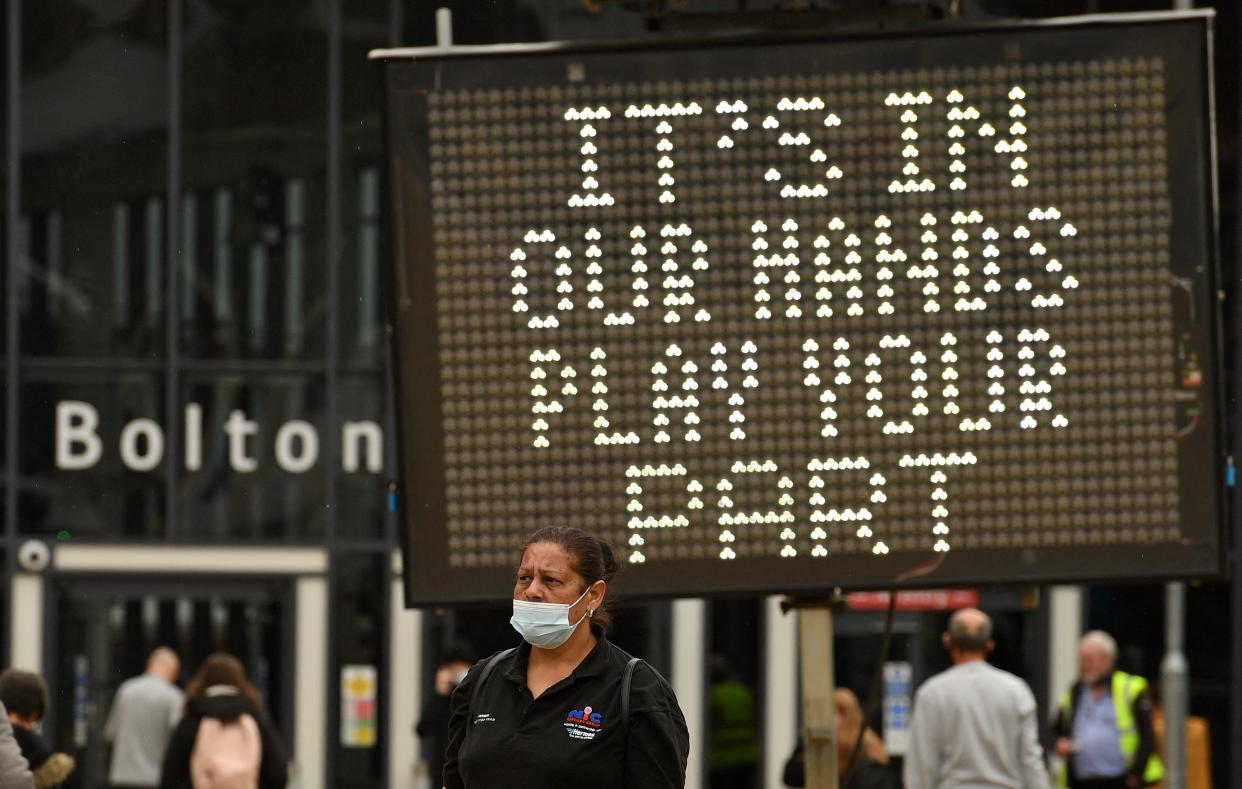
Hopes of lifting the coronavirus lockdown next month have been thrown into doubt by the spread of the Indian variant.
The B.1.617.2 variant is now dominant across the UK, making up three-quarters of new infections.
Cases have doubled in the last week, with the latest data suggesting B.1.617.2 could be 66% more transmissible than the Kent variant, which wreaked havoc across the UK over the winter.
Boris Johnson said on Thursday that the public may need to "wait a little longer" for restrictions to be lifted, while scientific advisers are urging caution.
Professor Andrew Hayward, a member of New and Emerging Respiratory Virus Threats Advisory Group (Nervtag), said on Friday that "there is a good argument for caution" until more of the population is fully vaccinated.
This raises the prospect of further curbs on businesses, in particular the hospitality sector, which is suffering as a result of social distancing rules.
Kate Nicholls, chief executive of trade body UK Hospitality, warned on Friday that businesses are operating at a loss due to restrictions, and said it is "absolutely critical" for the sector that the next stage of unlocking goes ahead.
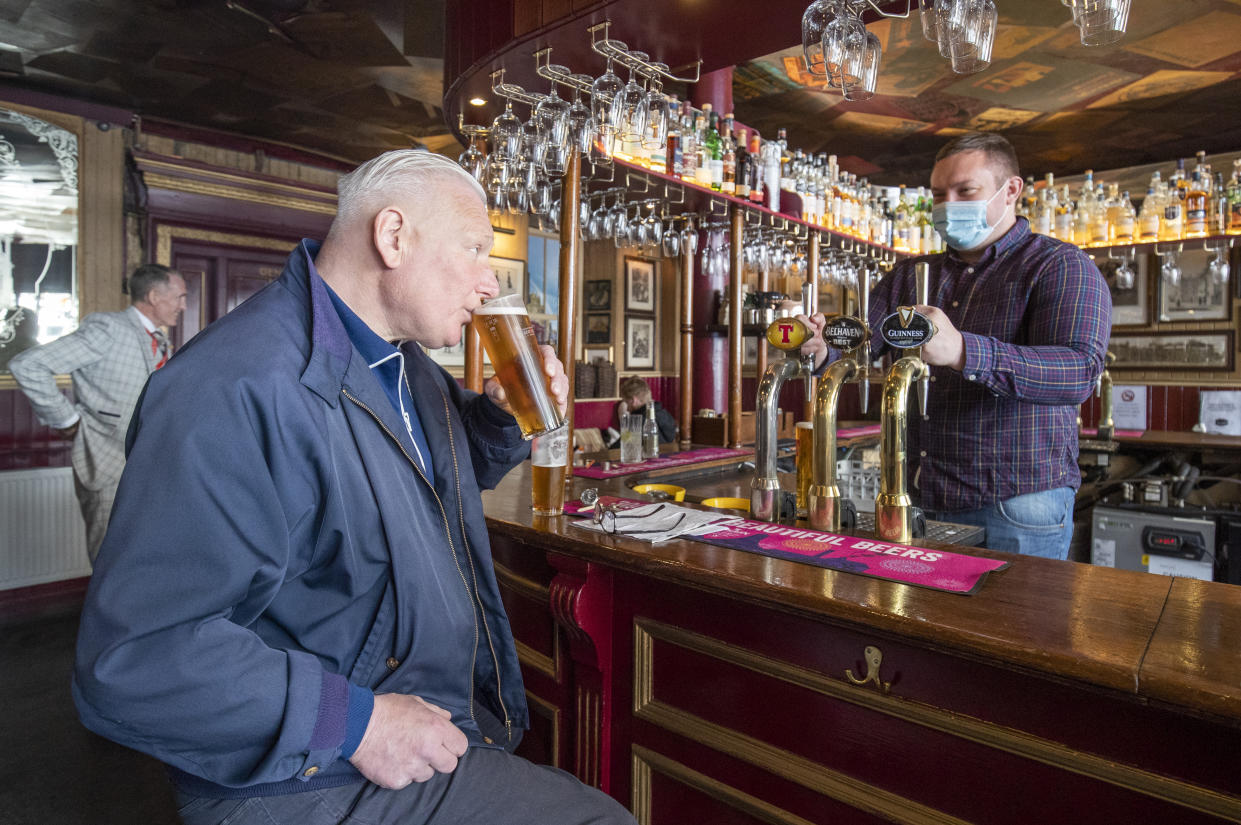
It comes as 73.3% of UK adults have received at least one dose of a COVID vaccine. While more than half of adults are yet to be fully vaccinated, the successful rollout is set to cushion the blow from the Indian variant outbreak.
Yahoo News UK has analysed the data to assess the danger posed by the spread of B.1.617.2
How fast is the variant spreading?
Since the first five cases were reported in England on 28 March, the size of the outbreak has doubled every week, except for the most recent seven days.
The B.1.617.2 variant is now dominant in England, making up 58% of all infections, according to the latest figures from Public Health England (PHE).
Total cases of the Indian coronavirus variant in England
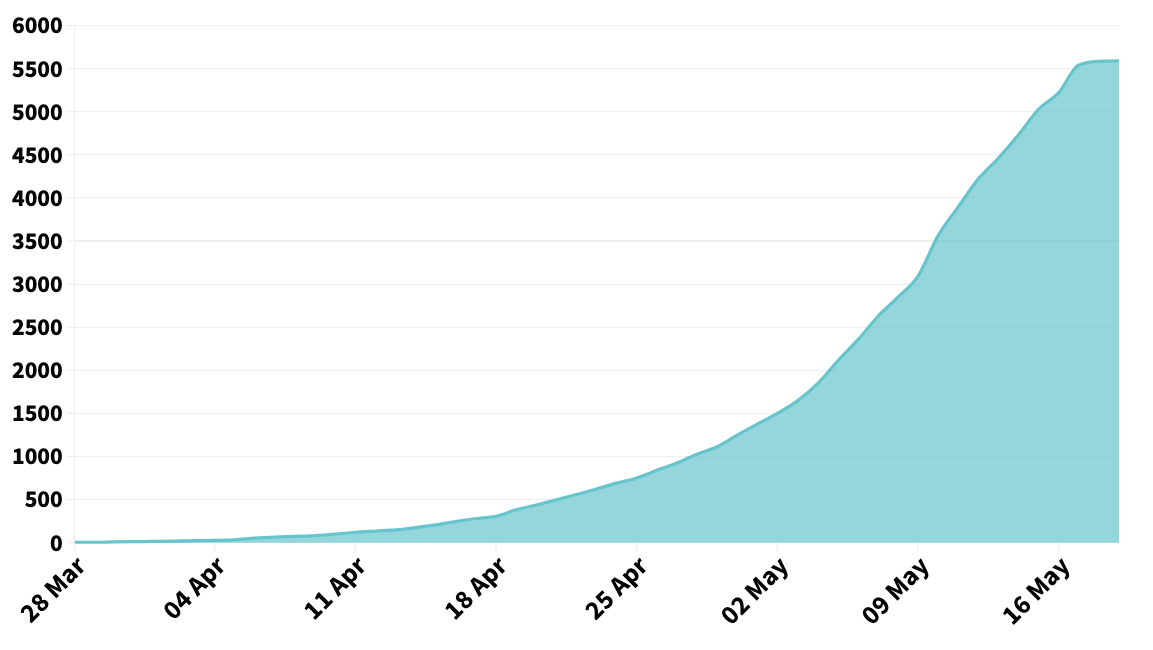
Cases of the Indian variant as a proportion of all infections
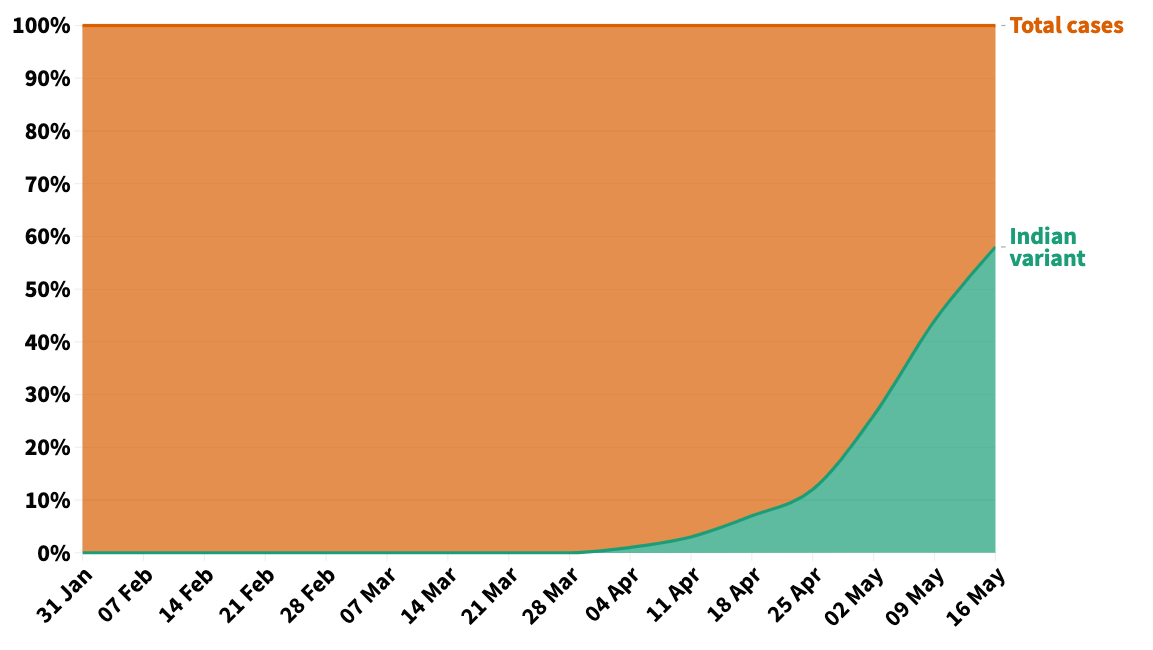
Experts have raised concerns over the speed of its spread.
Dr Duncan Robertson, an expert in modelling coronavirus, warned on Friday that data indicates the variant is "much more transmissible" than the Kent variant.
According to PHE, the secondary attack rate – a measure of how many of a person's contacts go on become infected – is 66% higher than for the Kent variant. However PHE warned that there was still uncertainty surrounding theses figures.
These numbers are potentially worrying.
Experts providing models to the government's scientific advisory group for emergencies (Sage) have warned that a new wave resulting from the variant could cause more hospitalisations than the first wave if the variant is more than 30% more transmissible, and if the country presses ahead with the roadmap of lifting lockdown.
The models predict that if the variant is more than 40% more transmissible and the plan to lift social distancing rules on 21 June goes ahead, the resulting wave would cause more hospitalisations than in either of the first two waves of COVID.
Where are the worst hit areas?
So far, infections from B.1.617.2 in England are concentrated in a few areas. More than a fifth of the country's 5,589 have been reported in Bolton.
At least five cases have now been reported in 152 of England's 252 local authority areas.
Watch: New figures for Indian variant show the power of vaccination
The local areas most affected are Bolton, Bedford and Blackburn with Darwen.
Seven further areas in England have more than 100 confirmed cases: Leicester, Sefton, Nottingham, Wigan, Central Bedfordshire, Manchester and Hillingdon.
Surge testing was rolled out across parts of Lancashire on Friday following a number of confirmed cases of the B.1.617.2 variant, with residents of Burnley, Pendle, Hyndburn and Rossendale urged to come forward for a test.
The map below shows the worst outbreaks of the Indian variant. The darker the colour, the more cases an area has reported. Areas shaded purple have recorded less than 5 infections as a result of the variant.
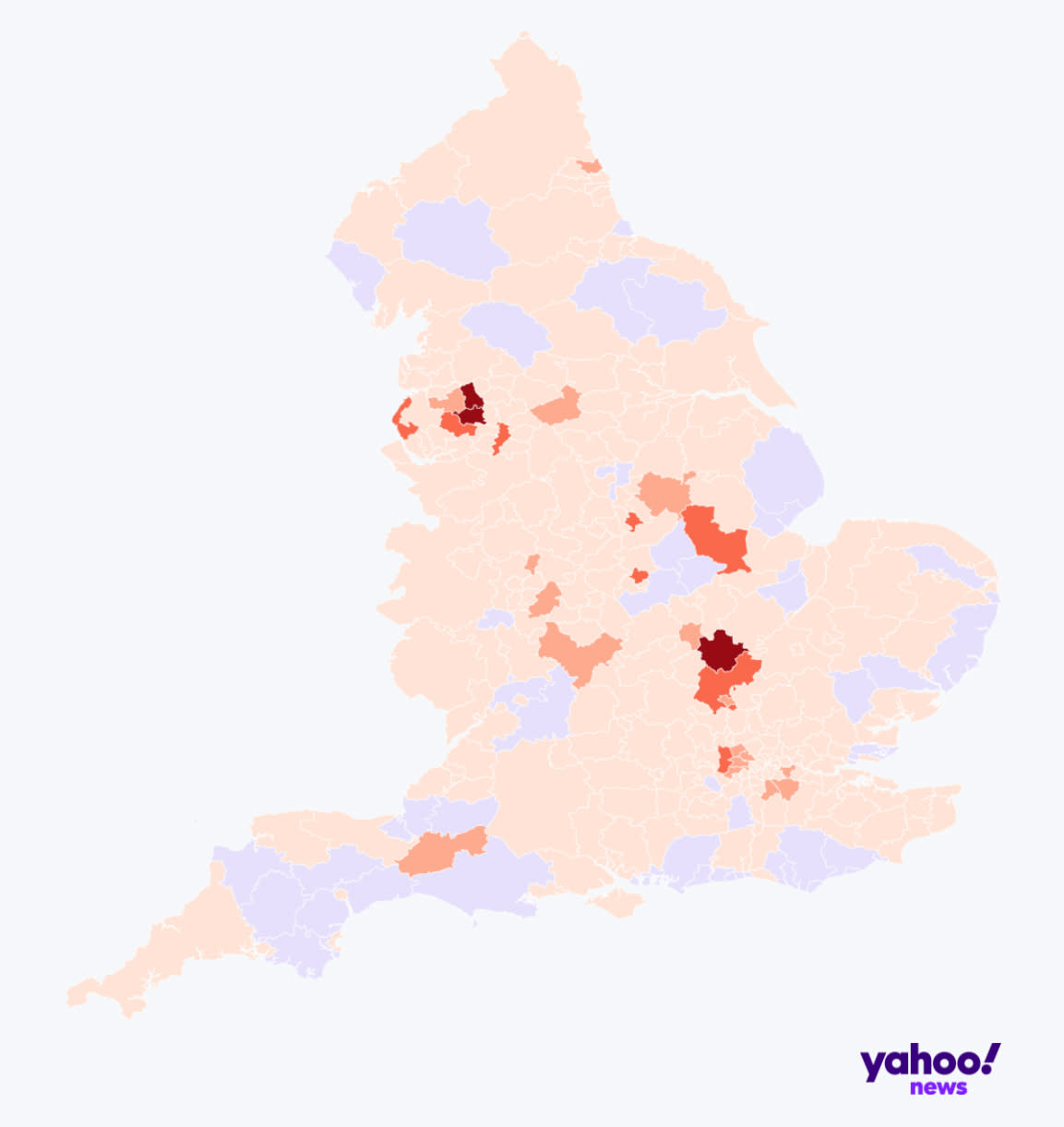
Some 10.6% of cases of the variant are among those who have travelled, according to PHE, with the rest spreading within the community.
The chart below shows cases that have spread within communities in the four worst hit areas of England. The figures, compiled by the Wellcome Sanger Institute, are correct to 15 May, and exclude infections among recent travellers.
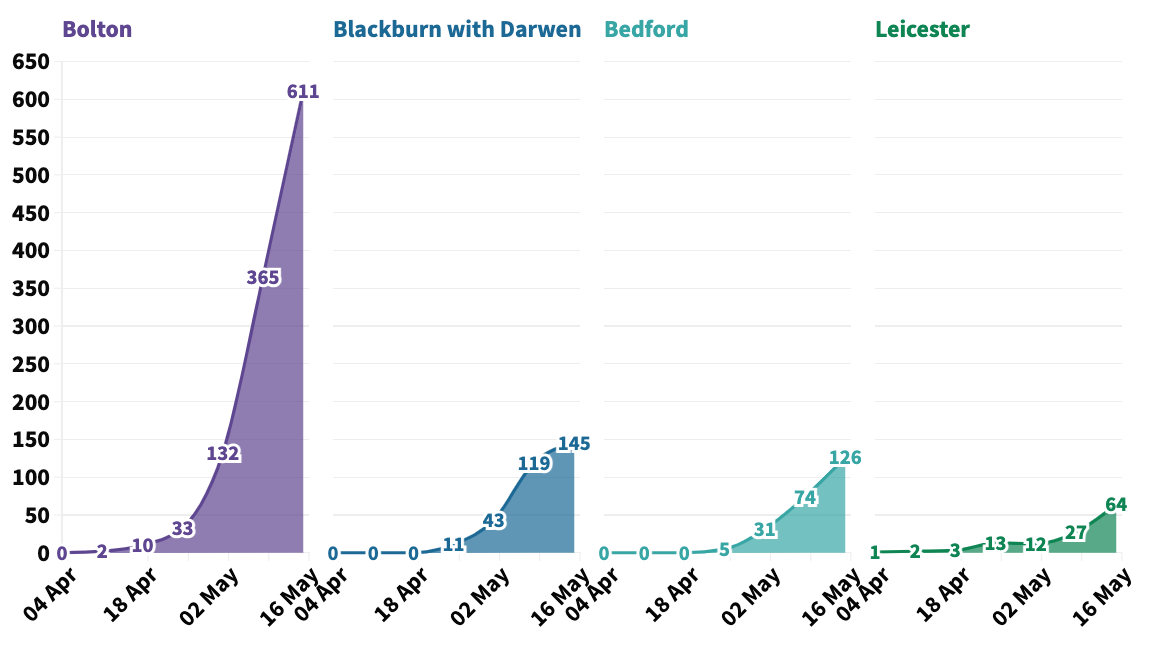
Who is getting infected?
So far, cases from the variant are predominantly affecting the young.
In Bolton, the vast majority of cases have been among the over 60s, who are less likely to be vaccinated than their older neighbours.
The chart below shows overall infection rates in Bolton by age, with a clear spike in cases in the under 60s as the Indian variant begins to spread.
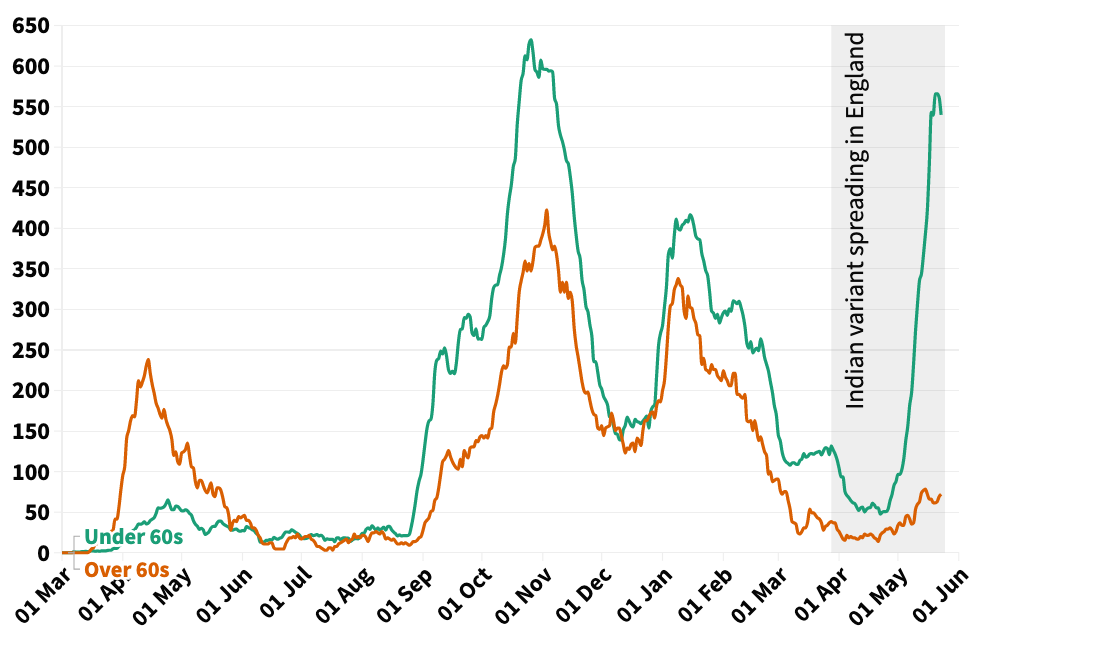
What about hospitalisations and deaths?
While the speed of the spread of B.1.617.2 is causing alarm, there is some reassuring data to suggest that the current vaccine portfolio offers protection against the variant.
As health secretary Matt Hancock put it on Thursday: “The vaccine is severing the link between cases and hospitalisations and deaths from coronavirus.”
According to a PHE study, two doses of the Pfizer or AstraZeneca vaccines offer strong protection against symptomatic disease from the B.1.617.2 variant.
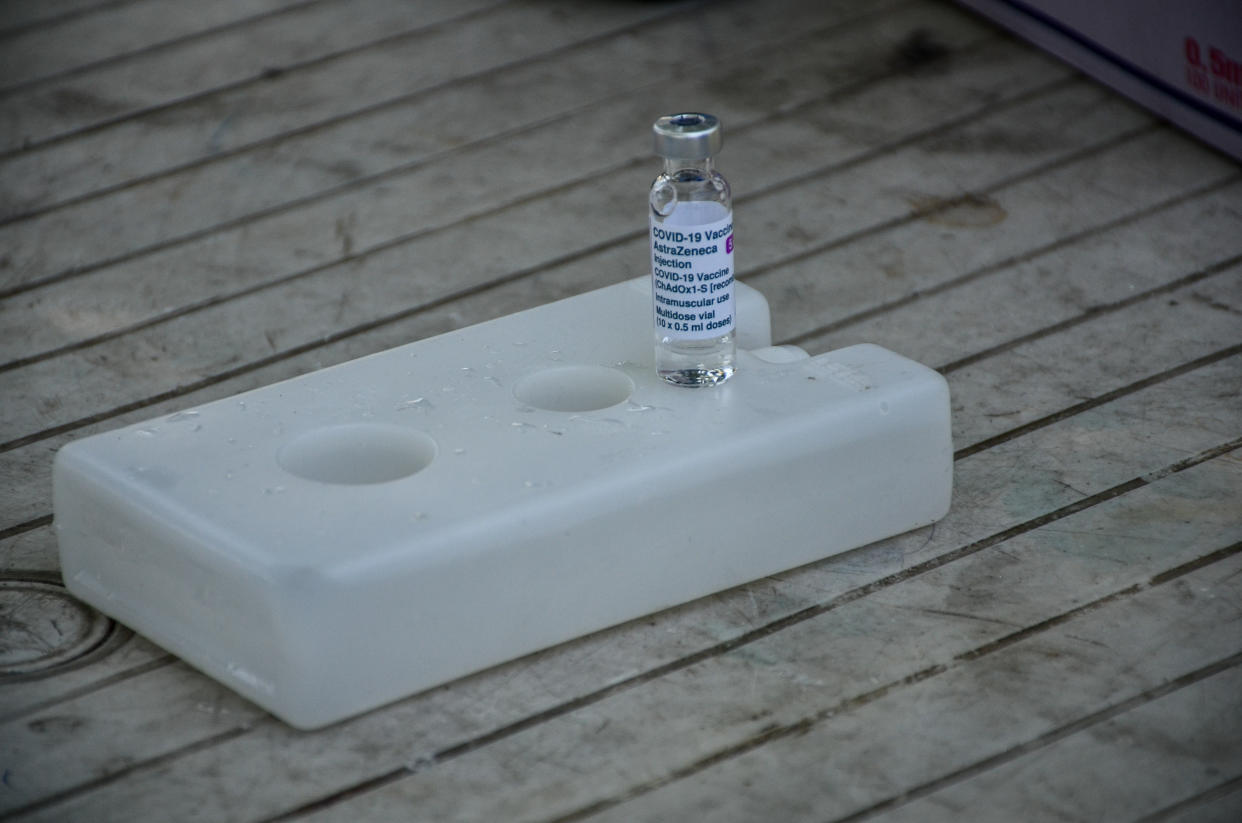
However, both of these vaccines were found to be only 33% effective against symptomatic disease from the variant from three weeks after the first dose.
These leaves the 53.5% of UK adults who have have one or zero jabs with a high level of susceptibility.
So far, hospitalisations and deaths have not seen something of an uptick, but no sharp spike as a result of the spread of the variant.
Of the 5,599 cases reported in England since 1 February, 201 have resulted in a visit to A&E, and 12 have resulted in death.
Scientists are still assessing the dangers of the variant, with full data expected to be presented to the prime minister in the coming days.
The PM has pledged to confirm whether the country can go ahead with the June unlocking on the 14th of that month.


